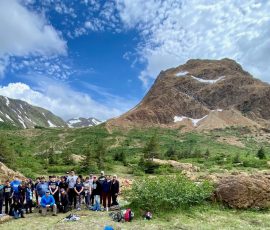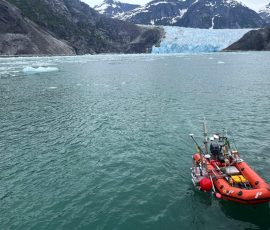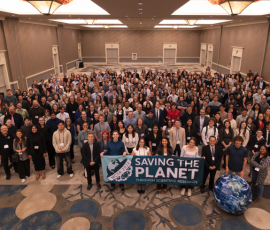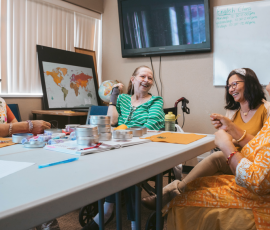In June, we were pleased to sit down with Jill Lemke, Vice President for Grants Management & Training and lead of our Health & Environmental Stewardship work at the Murdock Trust, for a conversation about this area of the Trust’s focus. This was one of seven sessions for our virtual Founder’s Day celebration where we got to hear about the Trust’s work across our region, learn more about recent organizational shifts, and hear from leadership.
Because we were not able to address all audience questions live, we wanted to follow up with Jill Lemke and respond to those we missed. Read Jill’s answers below, and scroll down for the session recording with timestamps of the conversation.
Q&As
These were questions registrants submitted before the session, or that attendees submitted during the session, that we didn’t have time to answer live. We appreciate your curiosity, and were pleased to follow up with Jill to answer some of these questions.
What is the level of interest/commitment to environmental sustainability in other parts of the world?
The Murdock Trust is focused on regional impact in the Pacific Northwest. However, the great thing about investing in environmental stewardship solutions is they often can be translated out into other communities and regions! For example, we have been so proud to partner with Forest Stewardship Council (read about it here) on three staffing and program expansion grants that invest in their work in Washington, but have the potential of global impact. Through increasing their technology staffing, they have established major partnerships that enable them to forecast areas of high illegal wood harvesting risk worldwide, track deforestation in other countries, and more. This is just one example of how investing in capacity-building resources in our own region often ripples out with impact.
What does Murdock do with regards to repurposing items or remanufacturing?
We love to support projects that encourage system-wide material repurposing – we are supporting scientific research right now that revalorizes plastics into fuel – but we also love to partner on projects that encourage local communities toward better repurposing, recycling, and manufacturing practices. Right here in Portland, one of our grantees, Free Geek, is taking discarded e-waste and safely refurbishing it to give back to the community. And now they’re expanding nationwide – a great example of how investing in a local nonprofit doing good work can have much broader impact.
How does an Executive Director keep the faith of fundraising?
This is certainly a big question! I’d direct you to one of our programs, Essentials of Development, which walks small to mid-size organizations through a process of healthy, sustainable fundraising. Many of our grantees have gone through this program and been renewed in their energy to keep the faith of fundraising, as you say!
What is the Trust’s theory of change for investments in the environment? How do you identify and pursue your environmental giving goals and outcomes?
At the Trust, we believe that when nature is cared for and protected, people and wildlife flourish. There are a number of organizations making this happen, with various methodologies and priorities, across our region. Like all work at the Trust, we do not have defined quotas for giving, but we seek grant proposals year-round for projects that build capacity in organizations working in the environmental stewardship area.
However, we do have a few funding priorities. We prefer solutions that focus on natural resource stewardship in partner with local voices – a collaborative approach that values the perspective of those who have long lived on these lands. We want projects that consider the connection between healthy lands and human flourishing and that embrace innovative approaches in working toward healthy people and healthy lands.
Everything is interconnected. Mental health with community health/environmental/individual health. So how can we define specific and SMART goals for a proposal?
I love that you are thinking about the big-picture interconnectedness of health and environment, but also are being attentive to the specificity of your project and the strength of your proposal. We want your proposal when it is at a point of clarity and consensus amongst your staff and board. If it is not the highest priority project for your organization, with board buy-in, it is likely not the best project for the Trust to fund and we would direct you to other foundations for that proposal. If you’ve determined that the Trust is the best fit for your project proposal, you’ll find that our application asks for specific items that will guide you through this process. I think that in this process, you’ll realize that your goals are focused and SMART, if the project has truly been thought through at every level of leadership. We also have lots of prompts and explanatory text to guide you through the application as you go.
Watch the full recording and find the topics that interest you most using the timestamps below.
The Conversation
01:32: Why the Trust funds health & environmental stewardship
02:51: Connection between these areas
05:20: Healthcare ecosystem of our region
06:51: The Trust’s work in mental health care
08:24: Different needs across our region
10:33: The Trust’s investment in environmental stewardship
13:24: What we’re hoping to learn in this sector
15:35: Do organizations need to work in both healthcare and conservation?
16:51: Healthcare deserts
19:22: Culturally specific mental health care
21:29: How to get involved in collaborations
22:39: Recent investments the Trust is excited about
24:58: Closing thoughts







